The Italian and his Balloon: “An account of five aerial voyages in Scotland” by Vincenzo Lunardi
At 3:45 p.m. on this very day, 5 October, in 1785, an Italian by the name of Vincenzo Lunardi lifted off in his “aerostatic machine” (read: hot air balloon) from the garden of George Heriot’s School for what would be the first of a series of historic balloon flights across Scotland. Lunardi wasn’t the first to attempt balloon flight in Scotland: James Tytler conducted his first flights in Edinburgh in 1784, but his trials amounted only to a maximum height of 350 feet and a distance travelled of only half a mile. Lunardi, originally from Lucca, came first to England as Secretary to the Neapolitan Ambassador and in September of 1784 Lunardi completed the first flight of a balloon in England (a 24 mile-long flight) in front of a crowd of over 200,000 people.
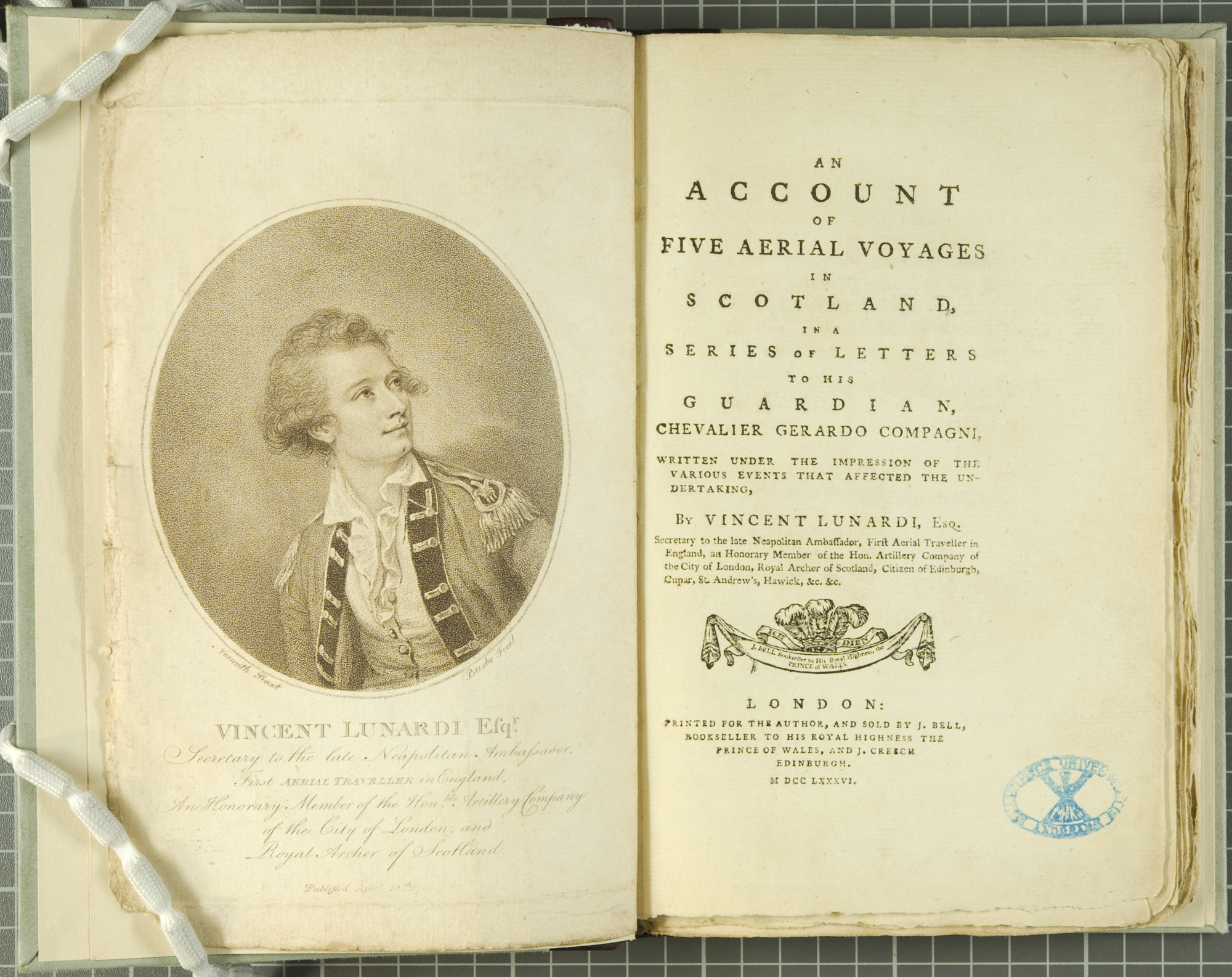
Lunardi was billed as “The Daredevil Aeronaut” and became famous overnight. His ballooning trials would inspire fashions such as the Lunardi skirt (balloon decorated) and the Lunardi bonnet (balloon shaped). Lunardi was invited to bring his balloon to Scotland in 1785, and it is from his account, printed a year later, that we get a real picture of Lunardi’s impression of Scots and the detail of his adventure. Lunardi arrived in September of 1785 and describes the people as “a hardy race…full of men of science and liberality” and the countryside along his journey as “almost alpine” and full of “enchanted regions of romance”.
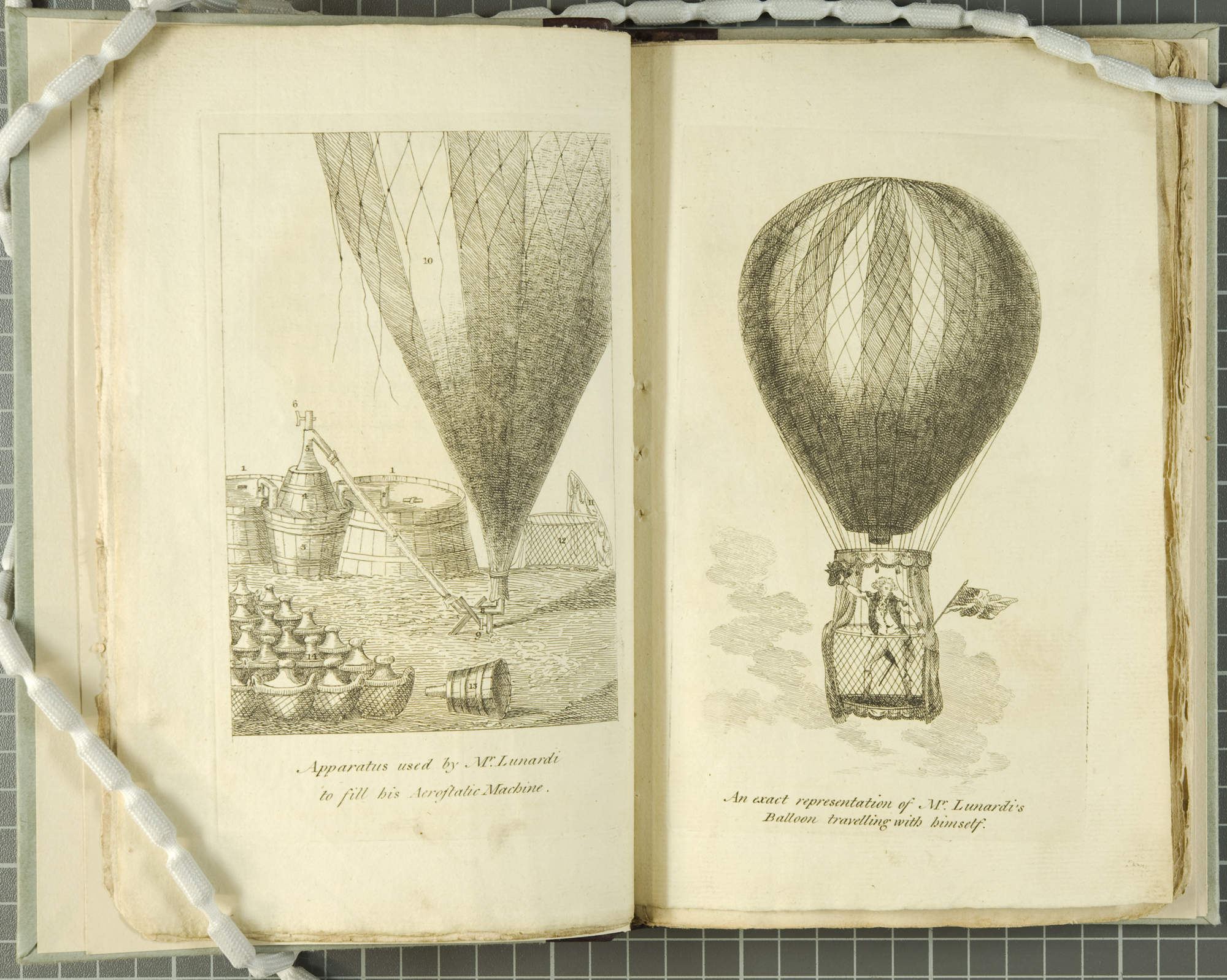
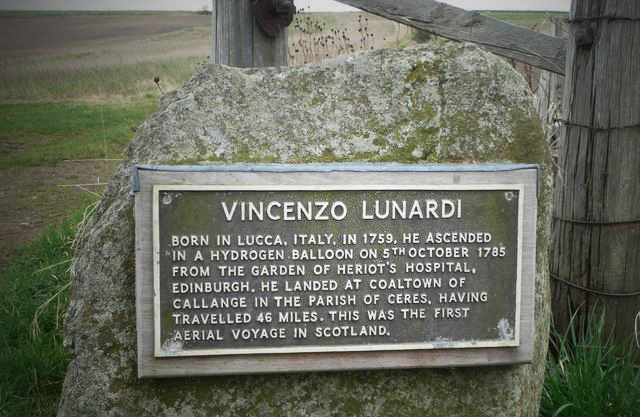
It took this adventurous Italian the better part of a month to meet the right people to promote his balloon flights, but by the beginning of October the place and time had been set for Lunardi’s first daring flight: a 46-mile journey, over 36 miles of water, from Edinburgh to near Ceres here in Fife, where a plaque now marks his landing. From a height of 1100 feet above ground, Lunardi recounts being able to see Glasgow and Paisley as well as the far short of the Firth of Forth. Lunardi was amazed and distracted by the beauty of Scotland, so much so that he accidentally rose to almost 2000 feet and found himself out over the Forth before knowing it. His journey took him over Inchkeith, east towards North Berwick, above the shore of Fife at Lower Largo and finally touching down just outside of Ceres.
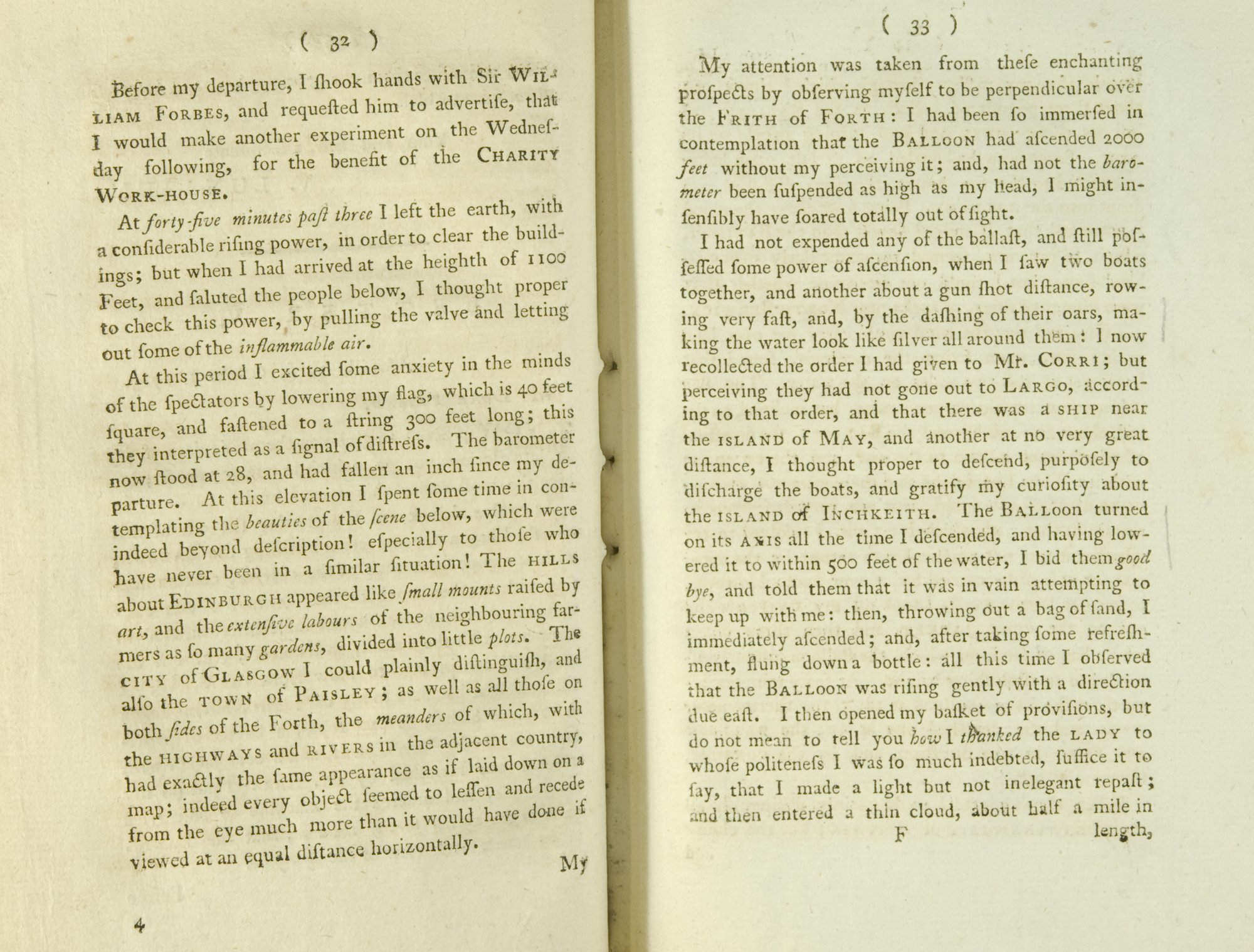
After his successful journey, Lunardi rested in Cupar where he was received by many dignitaries and clubs and then invited to St Andrews by the “Gentleman Golfers”. Upon arrival in St Andrews on the 15th of October, Lunardi was made a member of the golf club, was given freedom of the town and a ball was hosted on his behalf. The next day he visited the University, and his only comment about our institution is that it is “furnished with a good library, and some very valuable ancient manuscripts”!!
One of the many curious titles and awards that Lunardi received after this first flight was an invitation to join the “Knights Companions of the Beggar’s Benison,” a local club of the upper classes with rather questionable intentions! Lunardi would make four more flights in Scotland, all by the end of 1785, the last one ending in disaster as he was forced down to sea near the Isle of May. His passion and nature for ballooning inspired a nation to look to the skies.
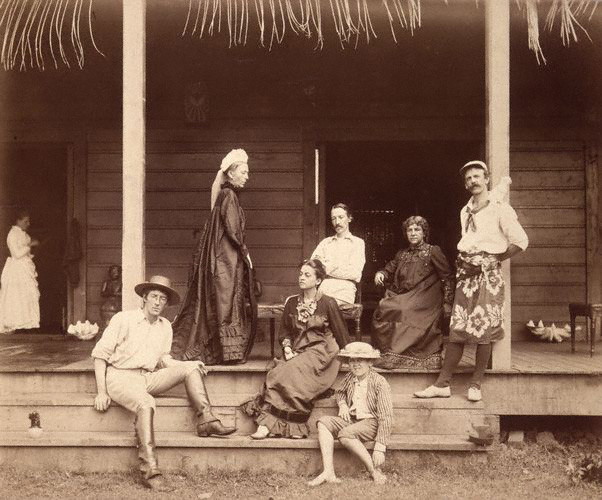
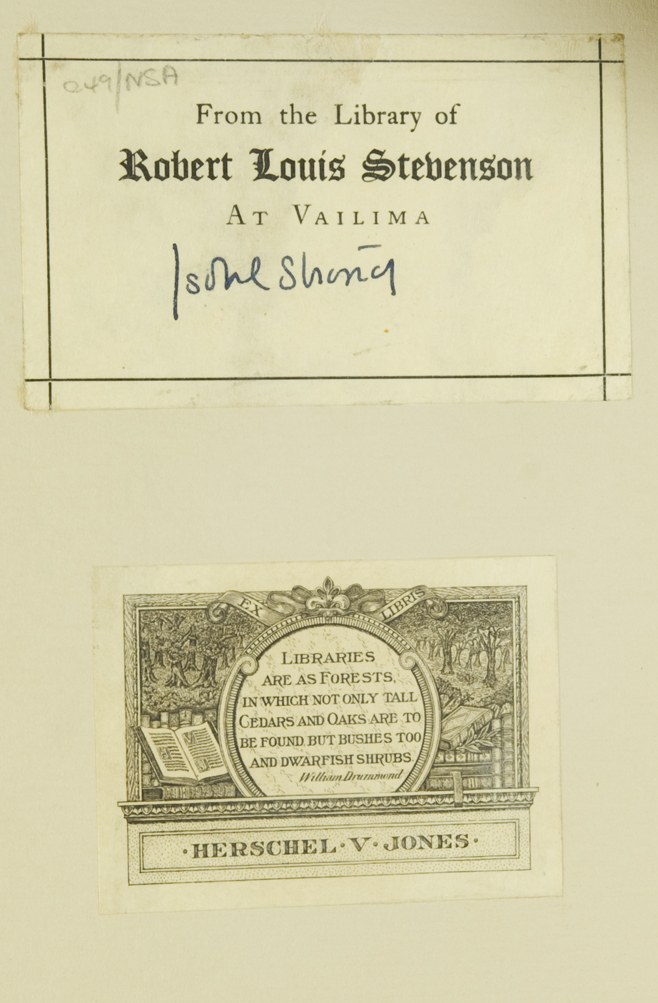
St Andrews has recently acquired a copy of the 1786 account of Lunardi’s five aerial voyages. This copy came from the sale of library of the Viscount Strahallan, Stobhall, Perthshire via Lyon & Turnbull. The Drummond family, previous owners of Stobhall, had amassed a wonderful collection of books over the years, many of which came from other prestigious collectors. This copy of Lunardi’s voyages was once part of the library of Herschel V. Jones, a famous publisher and book collector from Minneapolis, Minnesota (USA). This book also has the bookplate of Robert Louis Stevenson from his library at Vailima, his last residence. Stevenson spent much of his childhood in the small coastal towns of Fife, and surely this adventure tale of a courageous Italian sailing above his homeland was a prize possession in his tropical retreat.
–DG
This was really interesting! Thanks for sharing!
My ancestors - a mother and child - were cutting flax in a field near Ceres in Fife in 1786 - when they were amazed to see Vincenz Lunardi decend from the sky in his hot air balloon. My grandfather David Fowlis who was born in Ceres in 1880 said the story was passed down through his family and was told to me by uncle James Fowlis who lived to be 103.